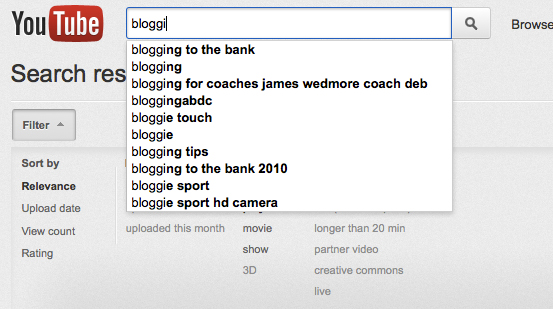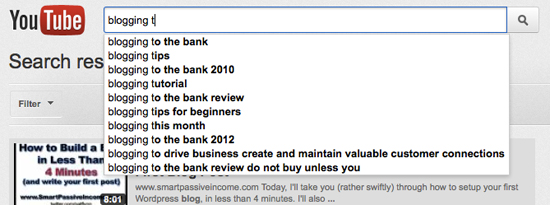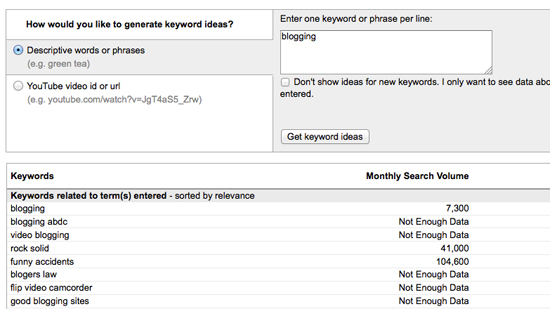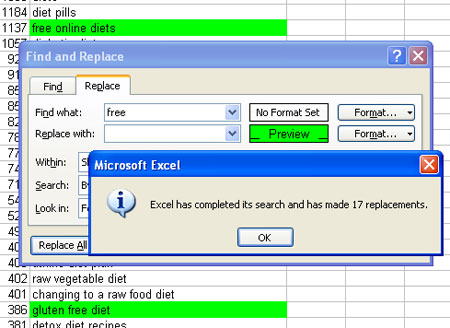HOW TO GET MORE VIEWS BY USE OF TAGS
According to YouTube, tagging is one of the most important ways to rank your video in YouTube search results/Recommended Platform.Tags do not appear on the viewers
Generally YouTube is defined in Categories or Genre (e.g. Comedy, Entertainment, Music)
SO
1.Tag identifies what video is of. Familiarity or some existing knowledge is needed to make this connection (this may be about names, locations, venues, etc).
2.Tag identifies what the video is of at its most primary and objective level..that is if you Search for Will Paul song on Releated search you might get Other Willy Paul songs or Bahati,Diamond,King Kaka songs....Because they are on the Same Category "MUSIC"
HOW TO USE TAGS
Gotta love Auto-Suggest: each new letter you add brings up more and more suggestions:

Furthermore, go ahead and use YouTube keyword suggestion tool to extract keywords from the selected videos:
Select most important tags (those that add perfect sense to you and your video) and add them to your “Selected Keywords” – you can then export your selected keywords to a CSV file for further analysis:
For example, you can use “Find and Replace” feature to highlight all the cells that have “free” in yellow (read more about organizing your keyword modifiers <- “oldie but goodie”):
Again, while you are free to play with the above tools to generate lots of keyword ideas, the main point of this step is to identify your most important core terms to build upon. After all, you don’t want hundreds of tags added. Instead, you want to add the best ones.
Generally YouTube is defined in Categories or Genre (e.g. Comedy, Entertainment, Music)
SO
1.Tag identifies what video is of. Familiarity or some existing knowledge is needed to make this connection (this may be about names, locations, venues, etc).
2.Tag identifies what the video is of at its most primary and objective level..that is if you Search for Will Paul song on Releated search you might get Other Willy Paul songs or Bahati,Diamond,King Kaka songs....Because they are on the Same Category "MUSIC"
HOW TO USE TAGS
1) Include Your Brand-Specific Tags
This one comes first because it’s so often neglected!
- You *want* to rank for your own brand name in YouTube search results;
- You do want your own videos to appear in Google’s universal results!
So what you never want to forget is to “self-reference” your video:
- With your own name (the one the world knows you by);
- Your brand name: preferably in a couple of variations, like: [brand name], [brandname] and [brandname.com]
2) Use YouTube Auto-Suggest
What you do next is playing with YouTube search results a bit. Two things we want to do here:
- See what YouTube suggests typing in when searching (you want to rank for all of those words);
- Identifying a few videos that tend to pop up now and then for important search queries (especially in default “by Relevance” tab)
Gotta love Auto-Suggest: each new letter you add brings up more and more suggestions:
3) Use Your Competitor’s Videos
Now that you have selected a few of the best-ranked videos on the same topic, review them carefully to see which tags they were using:
Furthermore, go ahead and use YouTube keyword suggestion tool to extract keywords from the selected videos:
Select most important tags (those that add perfect sense to you and your video) and add them to your “Selected Keywords” – you can then export your selected keywords to a CSV file for further analysis:
4) Use YouTube Tool
The aforementioned YouTube keyword suggestion tool can be used to both extract keywords from your competitors’ videos and to generate suggestions based on your core term (just like Google’s Adsense external tool), so you may want to play further for even more bright ideas:Adding the Tags
Now that you have thoroughly collected all the relevant tags, throw them into an Excel spreadsheet and use all sorts of sorting and conditional formatting to identify your best “core” words you want to include into your tags.For example, you can use “Find and Replace” feature to highlight all the cells that have “free” in yellow (read more about organizing your keyword modifiers <- “oldie but goodie”):
Again, while you are free to play with the above tools to generate lots of keyword ideas, the main point of this step is to identify your most important core terms to build upon. After all, you don’t want hundreds of tags added. Instead, you want to add the best ones.
For this:
- Omit “stop” words (especially articles “a” / “the”);
- Go with plural variant of the similar phrases (this is usually your best bet);
- Mind what YouTube suggests you using (it probably knows its stuff).






Comments
Post a Comment